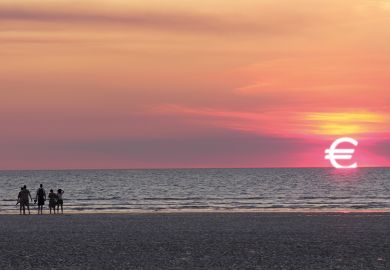Just 12 days in office, European Commission president Ursula von der Leyen presented her signature initiative: the European Green Deal. Aspiring to be “Europe’s hallmark”, the Green Deal proposes to make Europe the world’s first climate-neutral continent by 2050. It is a high-risk objective with massive opportunities, including for scientists.
To achieve its ambitions, the commission wants to cut greenhouse gas emissions from 1990 levels by at least 50 per cent, and ideally by 55 per cent, by 2030. Greenpeace and the European Greens have criticised this target as not ambitious enough. But in 30 years, we have achieved only a 28 per cent reduction in greenhouse gas emissions in Europe – to get to 55 per cent in the next 10 years will require massive changes in policy and behaviour, and it will require new scientific breakthroughs.
The Green Deal proposes a European Climate Law that will enshrine the 2050 goal as well as a European Climate Pact to involve societal actors including cities, universities and businesses.
The European Union’s industrial strategy will be reframed with climate neutrality at its core. Its Emissions Trading Scheme will be strengthened and will address the pricing of fuels – encouraging rail travel, for instance, over air and road alternatives. And the EU intends to pave the way for sustainable food production, to propose a zero pollution action plan for water, air and soil, and to address the loss of biodiversity.
To achieve its ambitions, the EU will use its regulatory powers to ensure that standards are aligned to the Green Deal. It plans to create EU revenues (called “own resources”) by keeping a share of what is raised via the Emissions Trading System and taxing non-recycled plastic packaging waste.
EU instruments such as the Common Agricultural Policy should contribute to the Green Deal with at least 40 per cent of its expenditure. And national governments are called to bolster the Green Deal through their own measures, including VAT reductions for ecological products.
With the Green Deal, the commission is taking on powerful industrial lobbies (car manufacturers, airlines and so on). It invites opposition from poorer EU countries that are still highly reliant on fossil fuels. And in proposing “own resources”, the EU asks for a direct source of income, which governments have thus far always denied. But the Green Deal is so powerful precisely because of the risks it takes. It recognises that isolated policies will not achieve breakthroughs. Climate change requires concerted action across all political domains, cross-border solidarity and social consensus.
Scientists have every incentive to see the Green Deal succeed. Research, education and innovation are part of the Green Deal, but on the surface there is little that is new. Of Horizon Europe’s expenditure, 35 per cent is to be spent on addressing climate change, but that target was there before. Four of the five research missions will address the Green Deal, but these missions had also been announced previously.
In fact, what is most important about the Green Deal is that for its targets to be achieved, we need fundamental scientific breakthroughs in a vast range of domains. The ambition to achieve a safe, circular and sustainable value chain for all batteries is simply not possible without further frontier-led research. Reducing carbon use calls for much more research into clean energy and the development of new eco-friendly materials. There is an explicit call for digital technologies to support achieving the sustainability goals, and this requires Europe to be at the scientific forefront in artificial intelligence and deep tech research, while in turn enhancing the energy efficiency of data centres and information and communications technology devices.
Focusing on what needs to be done by 2030 concentrates the mind. But it also contains the risk that the EU ends up prioritising short-term solutions over investment in breakthrough science whose results are – by nature – less predictable. A concentration on the 2030 goal must not undermine support for breakthrough science whose implications cannot be known for some time.
Moreover, the Green Deal cannot be about technological solutions alone. The cultural transformation required to sustain the Green Deal will require investment in new knowledge right across the social sciences and humanities.
And finally, in Europe the climate emergency is a major social concern, but so are unequal access to healthcare, the fight against cancer and social justice (to name but a few). The Green Deal requires a concerted effort, including from scientists, but it must not crowd out a focus on other pressing needs.
The Green Deal, then, presents the most powerful case for the EU investing in science – it places science at the centre stage of politics. If Europe really is to be a world leader in addressing climate change, and is to produce the science required to succeed in the long term, we need a much bigger budget for science than the €84 billion (£71 billion) for Horizon Europe that is currently on the table.
Jan Palmowski is secretary general of the Guild of European Research-intensive Universities and a professor of modern history at the University of Warwick.
Register to continue
Why register?
- Registration is free and only takes a moment
- Once registered, you can read 3 articles a month
- Sign up for our newsletter
Subscribe
Or subscribe for unlimited access to:
- Unlimited access to news, views, insights & reviews
- Digital editions
- Digital access to THE’s university and college rankings analysis
Already registered or a current subscriber?




